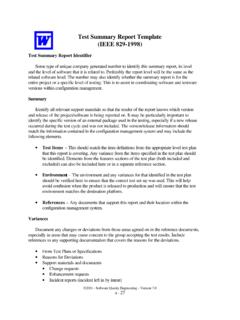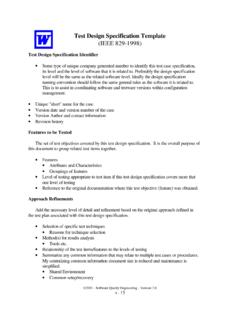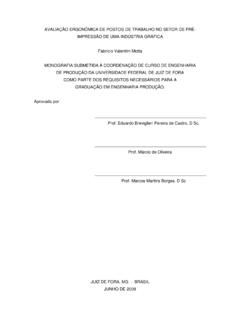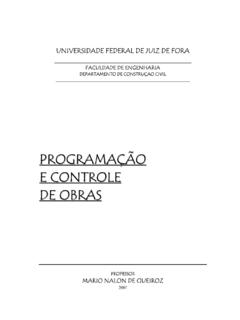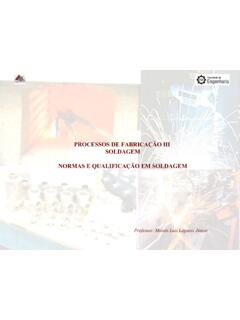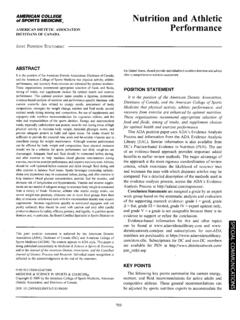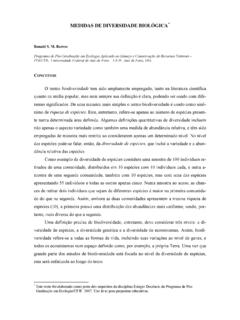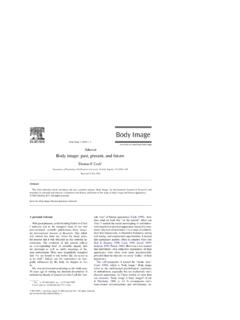Transcription of Simplified Unit/Integration Test Plan Template …
1 2001 - Software Quality Engineering - Version A - 38 Simplified Unit/Integration Test plan Template Version Identification Version/release Information and Configuration identification References Any supporting documentation Requirements specifications Design Specifications Other documents/diagrams Module/Component/ unit Owner Identification Type New Modified Owner of the module/component Module identification - name etc. Type of module, C-program, DLL, Etc. Is this a new module or a Modified existing module Functions/Features (attributes, sub-functions) Function Sub-function/Attribute Test Aspect/Risk New Modified Identify all modified functions/features and the attributes of those features Test Aspect/Risk Why does this need to be tested and what is the risk associated with the feature or function Business Risk, Risk to business if feature does not function correctly or causes faults Technical Risk Complexity, technology or other software concerns Is this a new function or a modification to an existing function Add as many entries as required 2001 - Software Quality Engineering - Version A - 39 Shared Elements (Constructs, transactions, messages, objects, classes)
2 Element Sharing Element Type Risk New Modified Identify any shared constructs and what they are shared with, this will help focus regression test efforts What are the risks to the shared elements Is the shared element new or being modified Add as many entries as required Interfaces/Communications Interface Type Risk New Modified Identify all interfaces and the type of interface Communication Database Transaction Network Other What are the risks to the shared interfaces Is the interface new or being modified Add as many entries as required Non-Modified or Other functions and attributes Function Sub-function/attribute Risk Identify all other functions/features and their sub-functions and attributes that are part of the modified component. This does not apply to new features or functions unless they are added to an existing module that as other existing features/functions.
3 What are the risks to those non-modified elements This will also help identify elements that require regression testing External updates Element Type/Category Version 2001 - Software Quality Engineering - Version A - 40 Identify any external elements that were updated or modified to support the change These can include DLLs, Object Classes, Shared libraries, vendor packages etc. This will allow identification of those elements that vary from those in the final production environment and may indicate where a more advanced version was used during development than will be used in production. Approach How will unit testing be accomplished Debugged Coverage tool Other tool How will proof of test be provided to show unit test was completed Trace reports Coverage reports Debug printouts Other Pass/Fail Criteria How will test results be evaluated prior to Build/ integration testing
